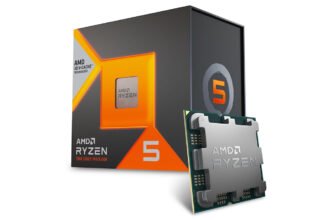Google and Qualcomm are reportedly preparing to bring Android-powered PCs to the market, as new evidence from Android 16’s private code list confirms ongoing development. The discovery suggests that future Android computers will be powered by Qualcomm’s Snapdragon processors, marking a significant step toward expanding Android beyond mobile devices.
The information surfaced when X user @Jukanlosreve shared screenshots from Android 16’s internal code list, which included references to Qualcomm’s Snapdragon X Elite and X Plus SoCs. These chipsets, originally designed for ARM-based Windows laptops, appear to be making their way into Android-powered systems. This move aligns with Google’s earlier hints of collaboration with Qualcomm, especially after a Google executive joined the Snapdragon Summit to discuss the operating system’s future direction.
The inclusion of Snapdragon X Elite in Android’s source code indicates that Google and Qualcomm are jointly preparing the groundwork for Android PCs. The X Elite and its sibling, the X Plus, gained attention for their efficient architecture and performance when running Windows. Their design proved that ARM-based silicon could offer desktop-level capabilities while maintaining lower power consumption compared to x86 alternatives.
However, the development may come with some compromises. The Snapdragon X Elite is no longer Qualcomm’s newest chip, as the company has already announced the Snapdragon X2 Elite and X2 Elite Extreme earlier this year. These successors bring architectural improvements and better AI acceleration, raising questions about whether the first generation of Android PCs will be equipped with hardware that is already a generation behind.
While older hardware could keep production costs lower, it also places additional pressure on Google to balance performance and pricing. If Android PCs debut with outdated chipsets, the company risks falling short in performance comparisons with Apple’s M-series chips or newer Windows-based ARM systems. The M5 and M4 Max, for instance, already outperform Qualcomm’s latest X2 Elite Extreme in synthetic benchmarks like Cinebench 2024, setting a high standard for competitors.
That said, it’s possible that Qualcomm’s newer chipsets may be added to the Android codebase in future updates. Such a move could extend the product line and ensure that Android PCs stay competitive as the market evolves. For now, the inclusion of Snapdragon X Elite in Android 16’s code provides the clearest sign yet that Google and Qualcomm’s collaboration is progressing.
The launch of Android-based PCs could open a new chapter for the operating system, potentially bridging the gap between mobile and desktop computing. With Google’s software ecosystem and Qualcomm’s hardware expertise, the partnership may deliver a new category of devices designed to run Android natively on PC-grade hardware. More details are expected as Android 16 development continues and manufacturers begin preparing early prototypes for testing.







